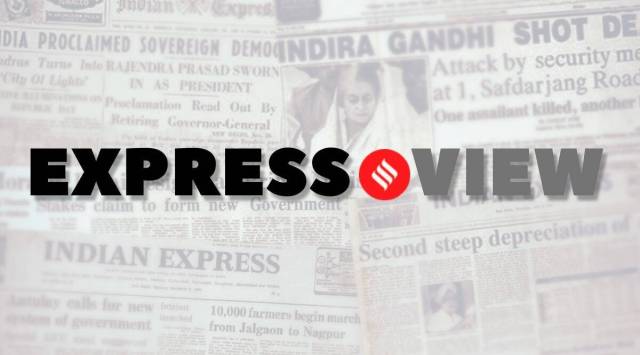Express View on the aviation industry: Flight to the future
Two aircraft deals — IndiGo and Air India — point to the potential of India’s aviation market. But fears of a duopoly remain.
 Significantly, the two deals come at a time when the India aviation outlook has run into some rough weather, triggered by the unprecedented surge in fares as passenger traffic picked up this year.
Significantly, the two deals come at a time when the India aviation outlook has run into some rough weather, triggered by the unprecedented surge in fares as passenger traffic picked up this year. Two back-to-back jumbo aircraft acquisition deals over a span of four months seem to mark an inflection point for India’s civil aviation sector, reaffirming the country’s position as the world’s fastest growing aviation market and the third biggest market globally in terms of the domestic traffic. Budget carrier IndiGo’s historic 500 aircraft deal Monday with Europe’s Airbus consortium was the most aircraft ever bought by a single airline, eclipsing the previous record set by Air India’s combined purchase of 470 aircraft from Airbus and Seattle-based Boeing in February. The two deals cumulatively ensure that India is now ensconced in second place in the list of carriers having the largest aircraft order book, behind the US. IndiGo’s order of its single-aisle aircraft, coming on the back of Air India’s orders, reflects the optimism that the two players have about the potential of India’s aviation market, which, in May, saw domestic passenger traffic numbers touch a record 13.2 million flyers, surpassing the pre-pandemic peaks.
Significantly, the two deals come at a time when the India aviation outlook has run into some rough weather, triggered by the unprecedented surge in fares as passenger traffic picked up this year. With Go First’s grounding now stretching way longer than initially expected, and hopes of Jet Airways’ revival running into fresh headwinds, there is concern that India’s domestic aviation market is heading in the direction of a duopoly that has market leader IndiGo and the Tata group airlines (Air India, Vistara, and AIX Connect). SpiceJet is still grappling with financial troubles and the fledgling Akasa Air is still too small to offer a meaningful challenge. For IndiGo, which dominates the Indian skies with a market share (in terms of passengers carried) of over 60 per cent, this new Airbus order basically ensures a steady supply of aircraft for the carrier till 2035 and equips it to consolidate its position on the leaderboard in India’s booming aviation market. The budget carrier is to also receive 480 planes from its earlier orders by the end of this decade, which could mean that the airline will be receiving close to 1,000 planes by 2035. Many of those aircraft would be used to retire older aircraft, of course.
In cumulative terms, Indian carriers have a fleet strength of over 700 aircraft, less than half the 1,500 aircraft with American Airlines, the biggest of the four major carriers of the US aviation market: Delta and United have around 1,300 aircraft each and Southwest Airlines has some 800 aircraft. So, clearly, India has a long way to go. With annual passenger capacity in the six major metropolitan cities likely to nearly double to 420 million passengers by 2030 and the government redoubling efforts to create aviation hubs in India, starting with Delhi, the two aircraft deals could well be another “nose up” moment for the country’s aviation sector.







































